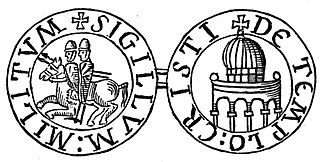
The Poor Fellow-Soldiers of Christ and of the Temple of Solomon, mainly known as the Knights Templar, was a military order of the Catholic faith, and one of the wealthiest and most popular military orders in Western Christianity. They were founded c. 1119, headquartered on the Temple Mount in Jerusalem, and existed for nearly two centuries during the Middle Ages.
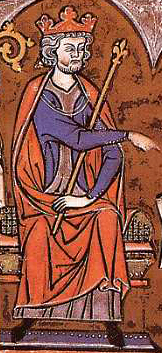
James I the Conqueror was King of Aragon, Count of Barcelona and Lord of Montpellier from 1213 to 1276; King of Majorca from 1231 to 1276; and Valencia from 1238 to 1276. His long reign of 62 years is not only the longest of any Iberian monarch, but one of the longest monarchical reigns in history, ahead of Hirohito but remaining behind Queen Victoria and Ferdinand III of Naples and Sicily. He saw the expansion of the Crown of Aragon in three directions: Languedoc to the north, the Balearic Islands to the southeast, and Valencia to the south. By a treaty with Louis IX of France, he achieved the renunciation of any possible claim of French suzerainty over the County of Barcelona and the other Catalan counties, while he renounced northward expansion and taking back the once Catalan territories in Occitania and vassal counties loyal to the County of Barcelona, lands that were lost by his father Peter II of Aragon in the Battle of Muret during the Albigensian Crusade and annexed by the Kingdom of France, and then decided to turn south. His great part in the Reconquista was similar in Mediterranean Spain to that of his contemporary Ferdinand III of Castile in Andalusia. One of the main reasons for this formal renunciation of most of the once Catalan territories in Languedoc and Occitania and any expansion into them is the fact that he was raised by the Knights Templar crusaders, who had defeated his father fighting for the Pope alongside the French, so it was effectively forbidden for him to try to maintain the traditional influence of the Count of Barcelona that previously existed in Occitania and Languedoc.

Philip IV, called Philip the Fair, was King of France from 1285 to 1314. By virtue of his marriage with Joan I of Navarre, he was also King of Navarre as Philip I from 1284 to 1305, as well as Count of Champagne. Although Philip was known to be handsome, hence the epithet le Bel, his rigid, autocratic, imposing, and inflexible personality gained him other nicknames, such as the Iron King. His fierce opponent Bernard Saisset, bishop of Pamiers, said of him: "He is neither man nor beast. He is a statue."

The Council of Vienne was the fifteenth ecumenical council of the Catholic Church and met between 1311 and 1312 in Vienne, France. One of its principal acts was to withdraw papal support for the Knights Templar at the instigation of Philip IV of France. The Council, unable to decide on a course of action, tabled the discussion. In March 1312 Philip arrived and pressured the Council and Clement to act. Clement passed papal bulls dissolving the Templar Order, confiscating their lands, and labeling them heretics.

The Military Order of Christ is the former order of Knights Templar as it was reconstituted in Portugal. Before 1910, it was known as the Royal Military Order of Our Lord Jesus Christ, and the Order of the Knights of Our Lord Jesus Christ. It was founded in 1319, with the protection of King Denis of Portugal, after the Templars were abolished on 22 March 1312 by the papal bull, Vox in excelso, issued by Pope Clement V. King Denis refused to pursue and persecute the former knights as had occurred in most of the other sovereign states under the political influence of the Catholic Church.

The Order of Calatrava was one of the four Spanish military orders and the first military order founded in Castile, but the second to receive papal approval. The papal bull confirming the Order of Calatrava was given by Pope Alexander III on September 26, 1164. Most of the political and military power of the order had dissipated by the end of the 15th century, but the last dissolution of the order's property did not occur until 1838.

The Order of Santiago is a religious and military order founded in the 12th century. It owes its name to the patron saint of Spain, Santiago. Its initial objective was to protect the pilgrims on the Way of St. James, to defend Christendom and to remove the Muslim Moors from the Iberian Peninsula with the Reconquista. Entrance was not restricted to nobility of Spain exclusively, and some members have been Catholic Europeans from other parts of Europe. The Order's insignia is particularly recognisable and abundant in Western art.

Gilbert Horal or Erail was the 12th Grand Master of the Knights Templar from 1193 to 1200.

The Order of Alcántara, also called the Knights of St. Julian, was originally a military order of León, founded in 1166 and confirmed by Pope Alexander III in 1177.
The Poor Fellow-Soldiers of Christ and the Temple of Jerusalem, or Templars, was a military order founded in c. 1120.

The Military Order of Saint James of the Sword is a Portuguese order of chivalry. Its full name is the Ancient, Most Noble and Enlightened Military Order of Saint James of the Sword, of the Scientific, Literary and Artistic Merit.

The War of the Sicilian Vespers, also shortened to the War of the Vespers, was a conflict waged by several medieval European kingdoms over control of Sicily from 1282 to 1302. The war, which started with the revolt of the Sicilian Vespers, was fought over competing dynastic claims to the throne of Sicily and grew to involve the Crown of Aragon, Angevin Kingdom of Naples, Kingdom of France, and the papacy.
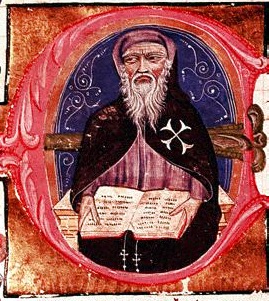
Juan Fernández de Heredia was a Spanish knight of Aragon who served as Grand Master of the Knights Hospitaller from 24 September 1377 to his death. His tenure was occupied by the "affair of Achaea", the persistent, but ultimately fruitless, efforts by the Knights to acquire the Principality of Achaea in southern Greece. He was also a great patron of the translation and composition of historiographical works in the Aragonese language and a counsellor to two Kings of Aragon.

The Order of Monfragüe was a Spanish military order founded at the castle of Monfragüe near Plasencia on the Tagus in 1196. The order was founded by the knights of the Order of Mountjoy who dissented from a merger with the Knights Templar. The order never prospered and on 23 May 1221, by order of Ferdinand III of Castile, it was merged into the Order of Calatrava.

In 1307, members of the Knights Templar in the Kingdom of France were suddenly charged with heresy and arrested after their leader, Master Jacques de Molay, had recently come to France for meetings with Pope Clement V. Many, including their leader, were burned at the stake while others were sentenced to perpetual imprisonment. The events in France led to a series of trials in other locations, not all of which had the same outcome.
This is a list of some of the modern orders, decorations and medals of Spain.
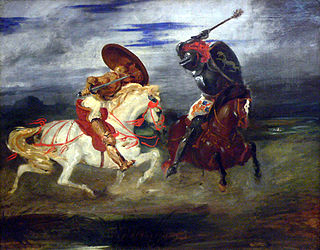
During the Middle Ages, Medieval Europe was engaged in constant warfare. European warfare during the Middle Ages was marked by a transformation in the character of warfare from antiquity, changing military tactics, and the role of cavalry and artillery. In addition to military, tactical and technological innovations during this period, chivalric military and religious ideals arose, giving motivation for engagement in the ceaseless warfare. In the Iberian Peninsula, chivalric ideals and institutions would be adopted and exercised with more fervour than anywhere else.

The Military Order of Christ was founded in 1318. The order, in every sense of the term, were Knights Templar who continued their operations from their headquarters in Tomar, Santarém Portugal. Contrary to the belief that the Templar Order was renamed and established by King Denis of Portugal, the Templars merely moved backed to their original headquarters in Tomar Castle which was an autonomous zone granted to the Templar Order. Reasons for this move and change of name were to protect the vast assets of the order from repatriation by the Catholic Church. The Templar assets were then transferred over to the Cavaleiros de Cristo, all with the blessing of King Diniz who helped pull off the deal with the Church.
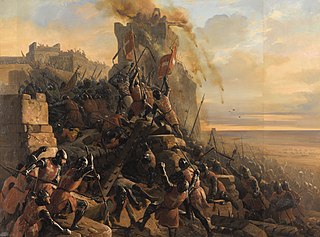
The Crusades after Acre, 1291–1399 represent the later Crusades that were called for by papal authorities in the century following the fall of Acre and subsequent loss of the Holy Land by the West in 1302. These include further plans and efforts for the recovery of the Holy Land, the later popular Crusades, Crusades against Christians, political Crusades, the latter parts of the Reconquista, and the Northern Crusades. Crusades were to continue well into the fifteenth century and would include those against the Ottoman Empire.

The fall of Outremer describes the history of the Kingdom of Jerusalem from the end of the last European Crusade to the Holy Land in 1272 until the final loss in 1302. The kingdom was the center of Outremer—the four Crusader states—formed after the First Crusade in 1099 and reached its peak in 1187. The loss of Jerusalem in that year began the century-long decline. The years 1272–1302 are fraught with many conflicts throughout the Levant as well as the Mediterranean and Western European regions, and many Crusades were proposed to free the Holy Land from Mamluk control. The major players fighting the Muslims included the kings of England and France, the kingdoms of Cyprus and Sicily, the three Military Orders and Mongol Ilkhanate. Traditionally, the end of Western European presence in the Holy Land is identified as their defeat at the Siege of Acre in 1291, but the Christian forces managed to hold on to the small island fortress of Ruad until 1302.



















